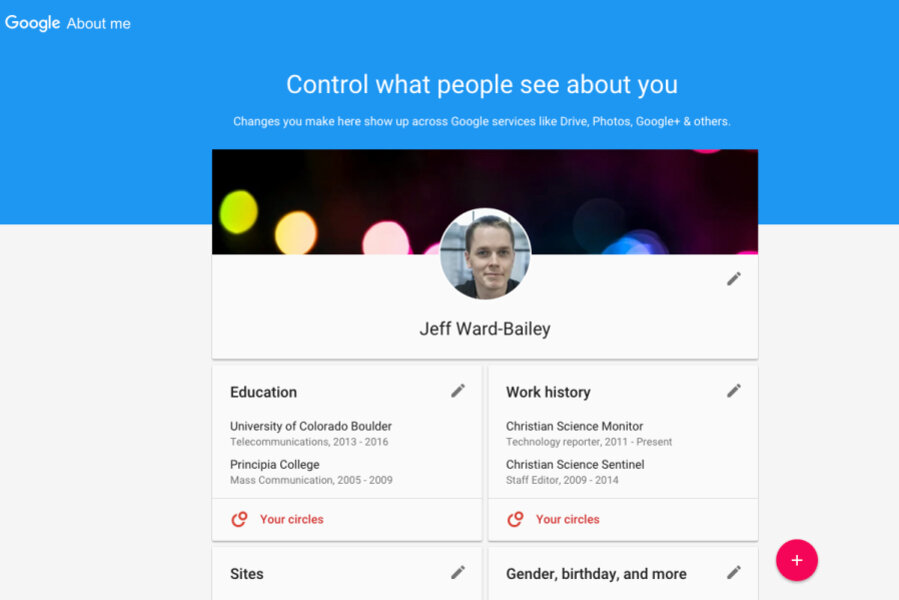New 'About Me' pages show exactly what Google knows about you
Loading...
Most people have dozens of personal accounts scattered across the Web: a few social media profiles, some stored payment information for shopping, accounts on news sites, and more. And while most people are concerned about privacy, hardly anyone has the time to go through every account to make sure that their personal information isn’t being displayed or shared in a way they’re not comfortable with.
Many people don’t know how to protect their personal information online, either: a 2014 Pew Research Center poll found that about half of Americans who use the Internet regularly don’t know what a privacy policy is or how it relates to data protection.
On Thursday, Google quietly introduced a tool that might make privacy protection a little easier for its users. The “About Me” page aggregates all the personal information that’s available across Google services such as YouTube, Photos, and even the Google+ social network.
The main “About Me” page shows personal information such as gender, birthday, work history, and more – and allows users to control whether that information is shared publicly, only with friends, or not at all. You can also use the dashboard to edit your information, or delete it completely.
If you want to dive deeper into how your information is being shared, click the “Privacy checkup” button in the lower-left corner of the dashboard. It’ll take you to a separate page where you can further customize whether your YouTube activity is shared, whether people can locate your Google profile using your phone number, and whether Google saves personal info that it uses to power its services, such as location and search history. You can also change whether Google’s extensive advertising network, which extends far beyond Google sites themselves, shows you ads based on what it judges to be your interests.
This isn’t the first time Google has tried to gather privacy information in one spot so users can see it. Google’s parent company, now called Alphabet, has more than 70 services, and in 2012 it consolidated the privacy policies for most of those into a single document written in plain English.
Other sites have made an effort to articulate privacy information more clearly to users, too. Last year Facebook introduced “Privacy Basics,” essentially a tutorial explaining what user information it makes public, and how users can control what’s being shared. And Snapchat rewrote its privacy policy earlier this month, inadvertently causing a furor from users who thought the company was selling pictures and videos taken using the app.
If you want to check what information you’ve shared with Google, and perhaps tighten down your privacy settings, head over to aboutme.google.com.








